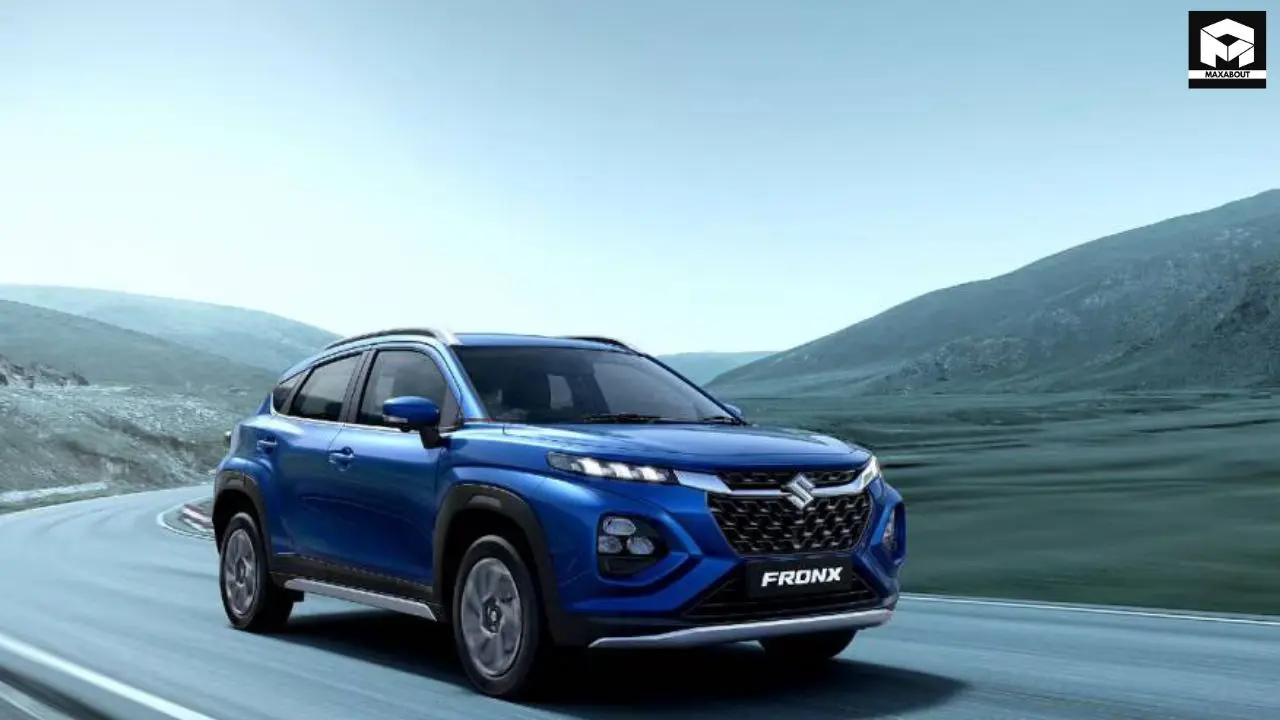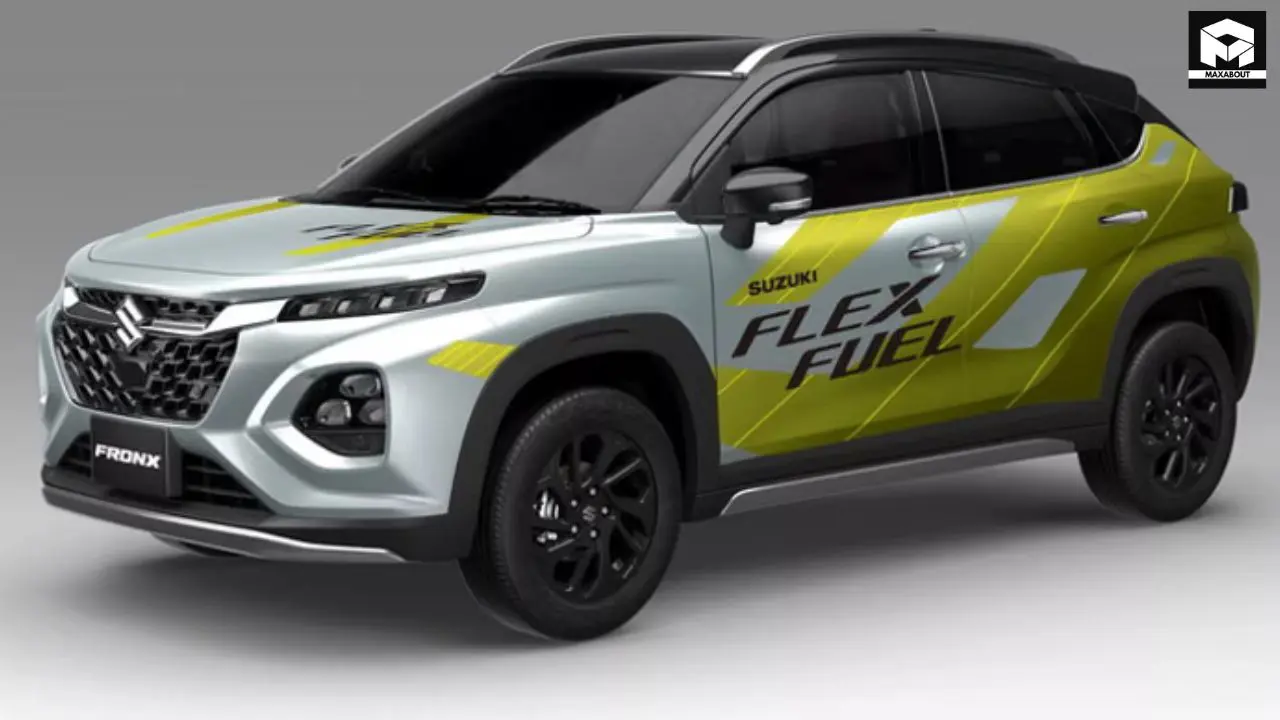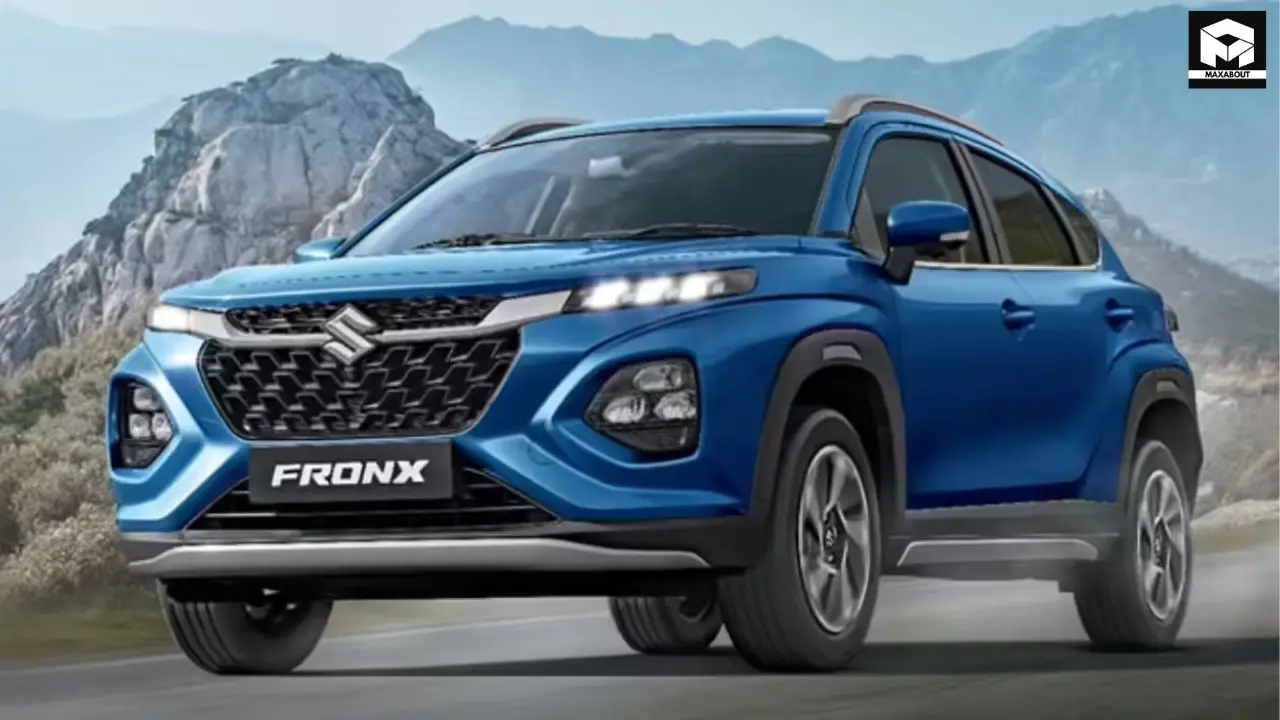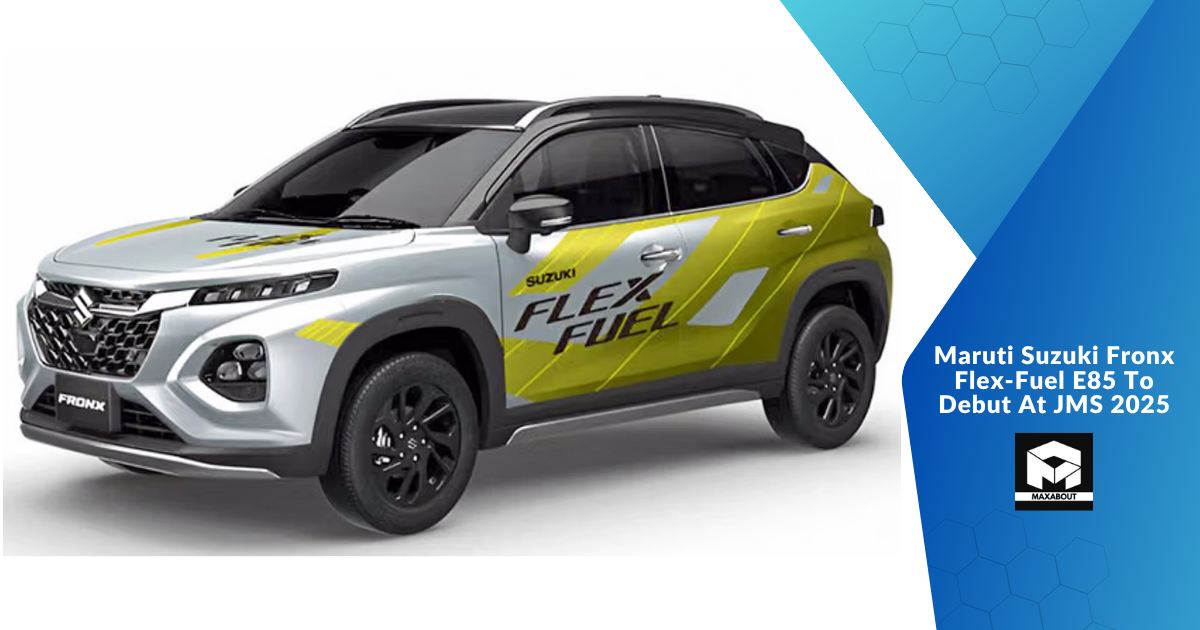Introduction
The automotive industry is witnessing a significant shift towards alternative fuel technologies, and Maruti Suzuki, India's leading car manufacturer, is stepping up its game with the upcoming Fronx Flex-Fuel E85 variant. According to recent industry reports, this innovative vehicle is scheduled to make its debut at the Japan Mobility Show (JMS) 2025, marking a notable milestone in Maruti's alternative fuel strategy.
As someone who closely follows automotive technology trends, I find this development particularly significant for the Indian market. The Fronx, already a popular compact SUV in Maruti's lineup, could potentially reshape how we think about sustainable mobility solutions in India. The flex-fuel capability allows vehicles to run on various blends of gasoline and ethanol, up to 85% ethanol (E85), offering a more environmentally friendly alternative to conventional fossil fuels.
Let's dive deeper into what we can expect from the Maruti Suzuki Fronx Flex-Fuel E85 and why this launch matters for Indian consumers and the broader automotive ecosystem.
Understanding Flex-Fuel Technology

Before we explore the specifics of the Fronx E85 variant, it's important to understand what flex-fuel technology actually entails. Flex-fuel vehicles (FFVs) are designed with specially modified engines and fuel systems that can run on various blends of gasoline and ethanol, from pure gasoline to high ethanol blends like E85.
What Is E85 Fuel?
E85 is a fuel blend containing 85% ethanol and 15% gasoline. Ethanol is primarily derived from plant materials such as corn, sugarcane, or agricultural waste, making it a renewable alternative to traditional petroleum-based fuels. The "85" in E85 refers to the percentage of ethanol in the mixture.
The key advantages of E85 over conventional gasoline include:
- Reduced carbon emissions
- Lower dependence on imported oil
- Support for agricultural economies
- Potentially lower fuel costs (region-dependent)
How Flex-Fuel Engines Work
Flex-fuel vehicles feature modified engine components that can handle the corrosive properties of ethanol. These modifications typically include:
- Specially designed fuel injectors and fuel pumps
- Modified engine control units (ECUs) with sensors to detect ethanol content
- Reinforced fuel lines resistant to ethanol's corrosive properties
- Adjusted ignition timing and fuel-air mixtures
From my technical analysis, the primary engineering challenge for Maruti would be adapting these systems to perform reliably under Indian driving conditions while maintaining cost-effectiveness—a balance the company has historically excelled at achieving.
Expected Specifications of the Fronx Flex-Fuel E85

While Maruti Suzuki hasn't released official specifications for the Fronx Flex-Fuel E85 variant, we can make some educated predictions based on industry standards and the current Fronx model's specifications.
Engine and Performance
The current Maruti Suzuki Fronx comes with two engine options: a 1.2L naturally aspirated petrol engine and a 1.0L turbocharged petrol engine. For the flex-fuel variant, I expect Maruti to adapt one or both of these engines to handle E85 fuel.
Typically, when engines are modified for high ethanol blends, they undergo several changes:
- Power output might see a slight increase due to ethanol's higher octane rating
- Fuel consumption may increase (ethanol contains less energy per volume than gasoline)
- Cold-start performance requires special attention in flex-fuel vehicles
Fuel Efficiency Considerations
One notable aspect of E85-compatible vehicles is their fuel efficiency. According to reports from markets where flex-fuel vehicles are common, E85 typically delivers about 20-30% fewer miles per gallon compared to gasoline due to ethanol's lower energy content. However, the environmental benefits and potentially lower fuel costs (depending on ethanol prices) can offset this drawback.
I anticipate Maruti engineers will focus on optimizing the Fronx's fuel efficiency when running on ethanol blends, possibly through advanced engine management systems and calibration techniques developed specifically for Indian driving conditions.
Environmental Impact and Government Initiatives

The introduction of the Fronx Flex-Fuel E85 aligns perfectly with India's push toward reducing carbon emissions and petroleum dependence. The government has been actively promoting ethanol blending in fuels, with ambitious targets for the coming years.
India's Ethanol Blending Program
The Indian government has set a target of achieving 20% ethanol blending in petrol by 2025-26, recently advanced from the earlier target of 2030. This policy, known as the Ethanol Blended Petrol (EBP) Program, aims to reduce oil imports, cut carbon emissions, and support the agricultural sector.
The introduction of vehicles like the Fronx Flex-Fuel E85 would complement these efforts by providing consumers with vehicles specifically designed to utilize high ethanol blends efficiently.
Carbon Emission Reduction
According to various studies on ethanol as a fuel, E85 can reduce greenhouse gas emissions by 20-30% compared to gasoline, depending on how the ethanol is produced. This reduction comes primarily from the fact that plants used to produce ethanol absorb CO2 during their growth, creating a partial carbon offset.
For environmentally conscious consumers, this reduction in carbon footprint represents a significant advantage over conventional vehicles, even as the industry gradually transitions toward full electrification.
Market Implications and Consumer Benefits
The launch of the Fronx Flex-Fuel E85 at JMS 2025 could have far-reaching implications for both Maruti Suzuki and the broader Indian automotive market.
Pricing and Cost Benefits
While flex-fuel technology does add some cost to vehicle production, Maruti Suzuki has consistently demonstrated its ability to offer affordable vehicles to Indian consumers. Based on trends in other markets, the price premium for flex-fuel capability might range from ₹25,000 to ₹50,000 over the standard variant.
However, this initial investment could be offset by potential savings on fuel costs if the government maintains favorable pricing for ethanol blends through tax incentives, which seems likely given the current policy direction.
Infrastructure Challenges
One significant hurdle for widespread adoption of E85 vehicles in India is the limited availability of high-ethanol blend fuels at retail outlets. According to industry reports, the infrastructure for distributing E85 is still in its nascent stages in India, with only a handful of stations currently offering this fuel.
The beauty of flex-fuel vehicles, though, is their versatility—they can run on regular gasoline when E85 isn't available. This flexibility makes them a practical choice even as the fueling infrastructure continues to develop.
Frequently Asked Questions
Can regular Fronx models be converted to use E85?
Unfortunately, regular Fronx models cannot be easily converted to use E85 fuel. Flex-fuel vehicles require specific modifications to fuel system components, engine calibration, and materials to handle ethanol's corrosive properties. These modifications need to be implemented during manufacturing.
Will the Fronx Flex-Fuel E85 be more expensive to maintain?
Based on data from other markets with flex-fuel vehicles, maintenance costs are typically comparable to conventional vehicles. However, more frequent fuel filter changes might be necessary due to ethanol's cleaning properties, which can dislodge deposits in fuel systems.
Can the Fronx Flex-Fuel E85 run on regular petrol?
Yes, that's the beauty of flex-fuel vehicles—they can run on any blend of gasoline and ethanol, from 100% gasoline to E85. The engine management system automatically adjusts performance parameters based on the detected ethanol content.
What happens if E85 isn't available in my area?
The Fronx Flex-Fuel E85 can operate perfectly well on regular gasoline. You wouldn't need to make any adjustments to the vehicle—it automatically detects the fuel blend and optimizes performance accordingly.
Conclusion
The upcoming debut of the Maruti Suzuki Fronx Flex-Fuel E85 at JMS 2025 represents a significant step in India's journey toward sustainable mobility. By embracing ethanol-blended fuels, Maruti is positioning itself at the forefront of alternative fuel technology while supporting national objectives for energy security and environmental protection.
For consumers, the Fronx Flex-Fuel offers an attractive proposition—the ability to choose more environmentally friendly fuel options without sacrificing the convenience and reliability that Maruti vehicles are known for. While challenges remain, particularly in terms of fuel infrastructure development, the flex-fuel technology's inherent flexibility makes it a practical solution for today's transitioning automotive landscape.
As we await the official unveiling at JMS 2025, it's clear that the Fronx Flex-Fuel E85 could play an important role in bridging the gap between conventional vehicles and the fully electric future that many envision. It represents a pragmatic approach to reducing emissions and petroleum dependence while leveraging existing infrastructure and supporting India's agricultural sector.

